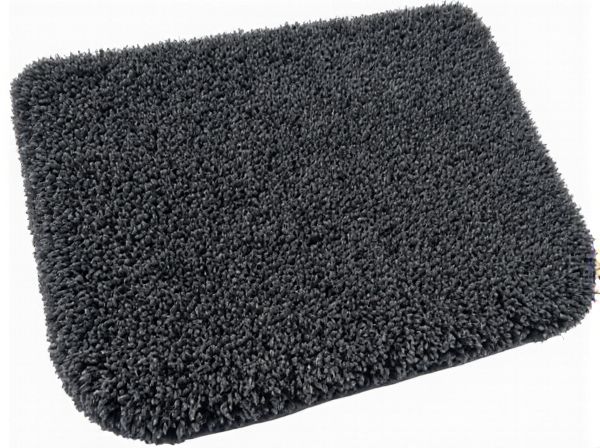
Photo illustration: Tufted Construction vs Woven Construction
Tufted construction involves inserting loops of yarn into a backing material, creating a textured surface ideal for plush rugs and carpets. Woven construction interlaces warp and weft threads on a loom, resulting in durable, intricate designs with tight fabric density. Your choice depends on desired durability and design complexity, as tufted rugs offer softness while woven rugs provide longevity and detail.
Table of Comparison
| Feature | Tufted Construction | Woven Construction |
|---|---|---|
| Manufacturing Process | Yarns punched through backing fabric | Interlaced warp and weft yarns |
| Durability | Moderate, suitable for standard use | High, ideal for heavy traffic and wear |
| Appearance | Soft, plush texture with varied patterns | Dense, tightly woven with precise designs |
| Cost | Lower production cost | Higher production cost |
| Maintenance | Easy to clean and replace | Requires careful cleaning to preserve weave |
| Common Uses | Standard car interiors, budget options | Luxury vehicles, premium interior trims |
Introduction to Carpet Construction Methods
Tufted carpet construction involves inserting yarn into a primary backing using needles, creating loops or cut pile that define the carpet's texture and durability. Woven carpet construction interlaces warp and weft yarns on a loom to form a dense, durable fabric with intricate patterns and higher resilience. Both methods influence the carpet's appearance, performance, and cost, with tufted carpets offering faster production and woven carpets providing superior longevity.
What is Tufted Construction?
Tufted construction involves inserting yarns through a primary backing material using needles to create loops or cut piles, commonly used in carpet manufacturing. This technique enables rapid production and customization of patterns with various textures and thicknesses. Tufted carpets offer durability and versatility, often making them more cost-effective than woven carpets.
What is Woven Construction?
Woven construction involves interlacing two sets of yarns, the warp and weft, at right angles to create a strong, durable fabric. This method results in tightly bound textiles commonly used in upholstery, drapery, and durable clothing due to their resistance to wear and tear. Compared to tufted construction, woven fabrics offer superior structural integrity and enhanced aesthetic versatility through intricate patterns and textures.
Key Differences Between Tufted and Woven Carpets
Tufted carpets are created by punching yarn through a backing material, allowing for faster, more cost-effective production and a wide variety of textures and patterns. Woven carpets involve interlacing warp and weft yarns on a loom, resulting in a denser, more durable, and higher-quality carpet suitable for high-traffic areas. The primary difference lies in construction technique and durability, with woven carpets generally offering superior longevity and tufted carpets providing greater design flexibility.
Durability: Tufted vs Woven Carpets
Woven carpets exhibit superior durability due to their interlaced fiber structure, which enhances resistance to wear and tear, making them ideal for high-traffic areas. Tufted carpets, while more affordable and quicker to produce, may have a shorter lifespan because their fibers are inserted into a backing rather than being woven, resulting in less structural integrity under heavy use. Choosing woven construction increases carpet longevity and maintains appearance, whereas tufted construction suits budget-conscious projects with moderate foot traffic.
Cost Comparison: Tufted and Woven Carpets
Tufted carpets generally cost less than woven carpets due to faster manufacturing processes and lower labor intensity. Woven carpets, such as Axminster or Wilton, require intricate craftsmanship and longer production times, driving up their price. Choosing tufted construction offers budget-friendly options while woven carpets provide superior durability and design detail, reflecting the higher cost.
Design and Style Flexibility
Tufted construction offers greater design and style flexibility through its ability to create intricate patterns and a variety of textures, making it ideal for customizable and decorative rugs. Woven construction is limited by the weaving process but produces highly durable, classic styles with detailed and consistent designs. Tufted rugs can achieve more vibrant and complex visual effects compared to the traditional, finely detailed appearance of woven rugs.
Installation Process and Time
Tufted construction carpets offer a faster installation process due to their lightweight backing and flexible nature, making them ideal for quick project turnarounds. Woven construction carpets require more precise installation techniques, including stretching and securing the carpet tightly to maintain durability, often resulting in longer installation times. The complexity of woven carpet installation typically demands skilled labor and additional preparation, which can extend overall project duration.
Maintenance and Longevity
Tufted carpet construction requires more frequent maintenance due to its looser fiber attachment, making it prone to shedding and quicker wear compared to woven carpets. Woven construction offers superior durability and longevity because the fibers are tightly interlaced, resulting in better resistance to crushing and matting. Maintaining woven carpets typically involves less intensive cleaning, contributing to extended lifespan and sustained aesthetic appeal.
Choosing the Right Carpet Construction for Your Needs
Tufted construction offers a cost-effective and versatile option with quick production and a wide range of textures, making it ideal for residential and high-traffic commercial spaces. Woven construction provides superior durability and intricate patterns, suitable for luxury settings where longevity and aesthetic detail are priorities. Selecting the right carpet construction depends on balancing budget, durability requirements, and design preferences to ensure optimal performance and style.
 caratoz.com
caratoz.com